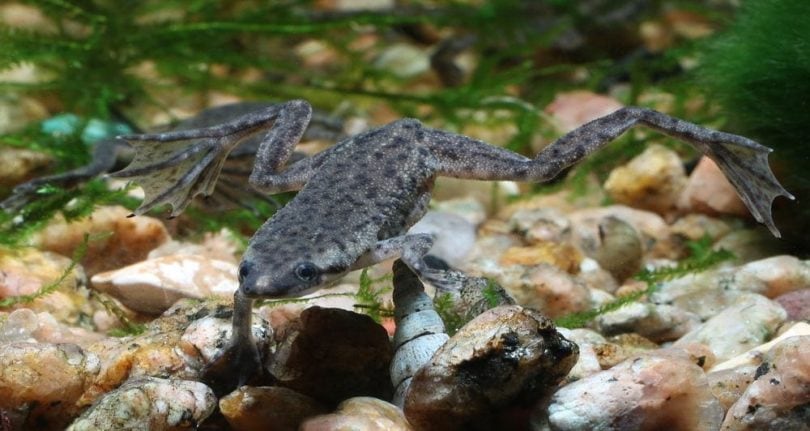How to Anchor Aquarium Plants (8 Expert Methods)
Updated on

Planted aquariums are one of the most beautiful things you could keep in your house, but keeping aquatic plants requires a few steps on your part. One of the most difficult parts of keeping aquarium plants is finding a way to anchor them. Some fish can make it extremely hard to keep your plants in place.
Goldfish, Cichlids, Dojo Loaches, and other popular fish are known for their tendency to uproot plants, while some types of substrate may not be heavy enough to keep your plants in place even if they aren’t constantly being uprooted. Luckily for you, there are multiple ways you can keep your plants in place.
How to Anchor Rooted Plants
1. Pick Your Substrate
If you want to keep a planted aquarium, select your substrate accordingly. Substrates made specifically for plants are a good option for feeding your rooted plants, but they tend to be relatively lightweight, so they may not do a good job of helping to hold your plants in place until they have the chance to develop their root systems. Gravel and stones can be used to help hold your plants in place, either permanently or while root systems develop.

2. Choose the Right Location
Where you place your plants can help you keep them in place. Using tank décor, corners, and other plants can all be good ways to help keep your plants in place. This can be beneficial if your plants have underdeveloped root systems. If you place your plants in strong currents or in places where they’ll routinely get bumped or tugged, then they’ll have a harder time staying in place.
3. Use Plant Weights
There are plant weights on the market that are made specifically for aquarium plants. They are heavy enough to help hold your plants in place, but they are lightweight enough that they won’t add significant weight to your tank or create notable water displacement. Plant weights are usually very affordable, and it’s not uncommon for aquatic plants to be sold with weights already attached.

4. Try Using Pots
Using pots within your aquarium can be a good way to get around your fish pulling up your plants. Terracotta pots and pots treated with aquarium-safe paints and glazes can be used without risking a negative impact on your water parameters. Pots can be a great way to keep plants in a tank that lacks substrate, and you have the option to add any combination of weights, substrate, and location to ensure they stay in place.
 How to Anchor Substrate-Free Plants
How to Anchor Substrate-Free Plants
- Use Fishing Line – A clear fishing line is a quick way to hold your substrate-free aquarium plants in place, but it does sometimes feel like you need three hands to make it work. You can use fishing line to attach your plants to natural and artificial items, including driftwood, rocks, and décor. Once back in the water, the fishing line will be practically invisible, giving your tank a clean look.
- Use Aquarium Safe Glue – Aquarium glue is the quickest and easiest way to anchor your substrate-free plants, but it does require a dry surface to attach the plants to, so you’ll need to plan ahead and pull your décor or rocks out of the tank beforehand. Aquarium glue typically will only stick to natural surfaces, so attempting to attach it to ceramic or plastic surfaces is likely to fail. Make sure to allow your glue to fully dry before putting the plants into the tank, and ensure you only use aquarium-safe glue.

How to Anchor Floating Plants
- Use Plant Corrals – The good news about floating plants is that they require essentially no anchoring. That doesn’t mean that you want your floating plants to have free range of your whole tank, though. Some plants, like duckweed, can quickly get out of hand if allowed to reproduce. Plant corrals are a good way to keep your plants inside or outside of a certain space in your tank without allowing them to take over. You can purchase plant corrals, but you can also make your own from airline tubing.
 In Conclusion
In Conclusion
Anchoring your aquarium plants in place can be a challenge, but there are multiple steps you can take to ensure your plants aren’t scattered all over your tank. Some fish that like to scavenge and dig may make it difficult to keep your plants in place, so it may take multiple interventions and attempts to keep your plants in the places you actually planted them.
See Also:
Featured Image Credit: Dario995, Shutterstock











